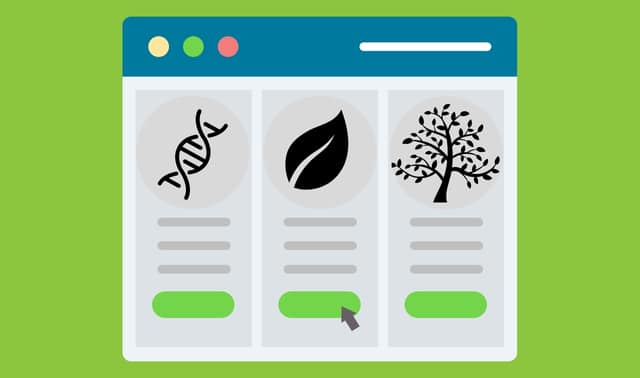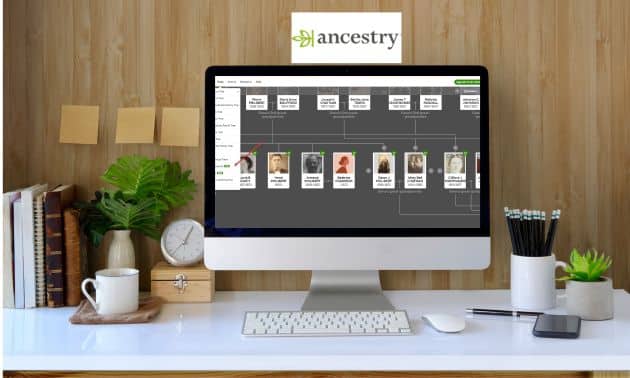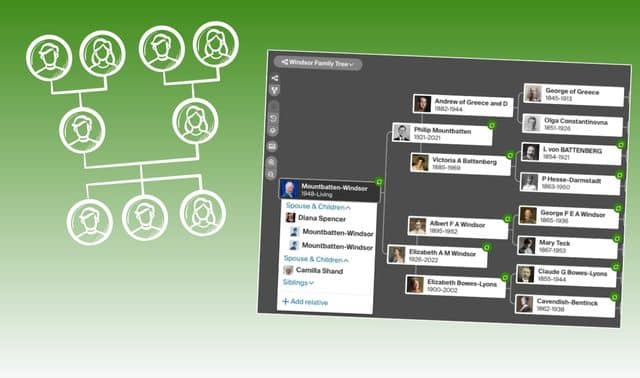Sign up for the Family Tree Newsletter! Plus, you’ll receive our 10 Essential Genealogy Research Forms PDF as a special thank you.
Get Your Free Genealogy Forms
"*" indicates required fields
Ancestry.com is among the largest genealogy websites, and a household name in family history research. Unlike FamilySearch, its fellow large website (and frequent collaborator), Ancestry.com is a subscription-based website. You’ll need a paid membership to access most of the site’s features.
In 2023, Ancestry.com rolled out a trio of membership options, adding complexity to its offerings. Read on for a comparison of Ancestry.com’s various subscription plans for US customers. Subscription prices and features are accurate as of February 2024.
Note that we here at Family Tree Magazine are not affiliated with Ancestry.com. You can learn more about Ancestry.com’s services and reach its customer service at the site’s Support Center.
| U.S. Discovery ($24.99/mo) | World Explorer ($39.99/mo) | All Access ($59.99/mo) | AncestryDNA Plus (~$4.99/mo; billed every six months) | Pro Tools ($10/mo add-on) | Preserve My Tree ($5/month) | |
| US records, plus Public Member Trees | X | X | X | |||
| All Ancestry.com records, both US and international | X | X | ||||
| Newspapers.com and Fold3 access | X | |||||
| Up to five users as part of the “Family Plan” | X | |||||
| Premium DNA tools*: ThruLines, details in shared matches, Traits, etc. | X | X | X | X | ||
| Premium family tree tools: data-checking, filters, reports, etc. | X | |||||
| View records you’ve added to a family tree | X** | X | X | X |
**U.S. Discover subscribers can only view records that are included in that membership tier. They cannot view non-US premium records, even those they’ve added to their trees.
Record Subscriptions
Ancestry.com offers some 30 billion records from 80 countries around the world. Some (such as the 1940 and 1950 US censuses) are free for users to access. But the majority require a paid subscription to search and view. You’ll also need a paid subscription to search family trees (“Public Member Trees”) created by other users.
Record memberships (available here) are billed either monthly or every six months. The site offers a small discount for purchasing six-month plans, and subscriptions are generally auto-renewing. You can cancel at any time, though you may have to pay for an additional month if you cancel less than two days before your scheduled auto-renewal payment.
U.S. Discovery ($24.99/month)
Best for: New US-based genealogists, or researchers whose known ancestry is exclusively in the United States
Based in the United States, Ancestry.com offers a subscription tier designed for American researchers. Through U.S. Discovery, you can access documents such as:
- All US censuses that have been released to the public, 1790 through 1950 (including substitutes for the 1890 census)
- New York passenger lists from 1820 to 1957 (including records from both Castle Garden and Ellis Island), plus arrival records from the ports of Baltimore, New Orleans and more
- Passport applications from 1795 to 1925
World Explorer ($39.99/month)
Best for: Researchers with ancestors both in the United States and abroad
These grant you full access to records on Ancestry.com—those from the United States as well as other countries. Notable non-US collections includes:
- Canadian censuses, 1861 through 1931
- English censuses, 1851 through 1921 (plus the 1939 Register of England and Wales)
- Hamburg passenger lists, which document many emigrants leaving Europe
All Access ($59.99/month)
Best for: More-experienced genealogists wanting historical newspapers and military records, or who want to share access with other researchers
Access everything on Ancestry.com, plus all the documents available at sister sites Newspapers.com (historical newspapers) and Fold3 (mostly military records). Notably, All Access gives the “Publishers Extra” tier at Newspapers.com, which includes more-recent issues of newspapers.
All Access subscribers can also invite up to four additional users to participate in their “Family Plan.” This is a great option if you’re collaborating with relatives or fellow genealogists.
The All Access bundle is convenient, but doesn’t represent a huge discount on subscriptions to the three sister sites. At $59.99/month, All Access is only about $17/month less expensive than subscribing separately to Ancestry.com’s World Explorer ($49.99/month), Fold3 Premium ($7.95/month) and Newspapers.com’s Publisher Extra ($19.90/month).
AncestryDNA Plus ($29.99/6 months)
Best for: Those who have tested with AncestryDNA but don’t want or need record access
Introduced in September 2023, AncestryDNA Plus grants access to additional DNA tools. Many of the features rely on the site’s innovate phasing technology SideView, which reports on what DNA (including ethnicity and matches) came from your paternal versus maternal lines. Other premium tools give you more-detailed information about shared matches, including full access to Traits reporting on health and physical characteristics and the site’s innovative ThruLines tree suggestions.
Note that AncestryDNA Plus tools are included as part of the site’s record memberships. As long as you’re a record subscriber, you’ll retain access to premium DNA features.
Unlike record memberships, AncestryDNA Plus is only available as a twice-per-year subscription; there is no per-month option.
Pro Tools Add-On ($10/month)
Best for: Those who use Ancestry.com as their primary family tree
In December 2023, Ancestry.com announced Pro Tools, a bevy of enhancements to its Public Member Trees that can be added to record subscriptions. Tools are still being added as of this writing, but to date include:
- Error-checking in family trees, which highlights errors such as duplicate people or illogical birth dates
- Charts and reports, including Ahnentafel and descendancy charts
- Additional options for filtering tree profiles
These are all new-to-Ancestry.com features. But many are already included in other tree-building tools at no extra cost, including FamilySearch, MyHeritage and desktop genealogy software.
As of this writing, Pro Tools are only available as an upgrade to one of Ancestry.com’s record memberships. Unlike premium DNA features, Pro Tools are not available to existing Ancestry.com subscribers, nor to free users.
Preserve My Tree ($5/month)
Best for: Researchers taking a break from paid record subscriptions
Building family trees at Ancestry.com is free, and you’ll have access to your family tree even if you cancel a paid Ancestry.com membership. However, you’ll need one of the records memberships above to view records—even those that you’ve attached to people in your family tree. If you cancel your paid membership, you’ll no longer be able to view premium records.
Recognizing this, Ancestry.com launched “Preserve My Tree,” a less-expensive membership that allows you to see Ancestry.com records attached to your tree even without a records subscription. This is ideal if you once had a paid subscription but want to cancel or pause for the time being, while still being able to fully access the work you’ve already done.
Note that Preserve My Tree doesn’t include records you may have added from Fold3 or Newspapers.com.
Which Ancestry.com Subscription is Right for Me?
That depends on your experience level and needs as a genealogist.
In general, the World Explorer membership will suit most researchers’ needs. It includes both US and international records, and grants access to the premium DNA tools.
The “Preserve My Tree” option is a great choice for Ancestry.com users who want to take a break from a paid subscription. (See below for more money-saving tips.)
Saving Money on Ancestry.com Subscriptions
- Subscribe for a month or two, then cancel: Set aside lots of time for your research, then sign up for a paid records membership on the monthly plan. You’ll pay more per-month than you would on the semi-annual plan, but you don’t have to commit to six months at a time. Do your research, then cancel at least two days before your first renewal. You might downgrade to the “Preserve My Tree” subscription to continue accessing premium records.
- Read the fine print. Know how many months you’re committing to when signing up.
- Sync your trees to desktop software: Ancestry.com is compatible with popular desktop programs Family Tree Maker or RootsMagic. These cost just a one-time fee to download, so you could sync your Ancestry.com tree with either to preserve your research and access to attached records (even after canceling a subscription).
- Invite friends to your plan, then split the fee. The All Access membership allows you to add four other users to your account. Go in on a subscription fee with your relatives or genea-buddies, then divvy up the subscription fee offline.
Related Reads
Last updated: February 2025










